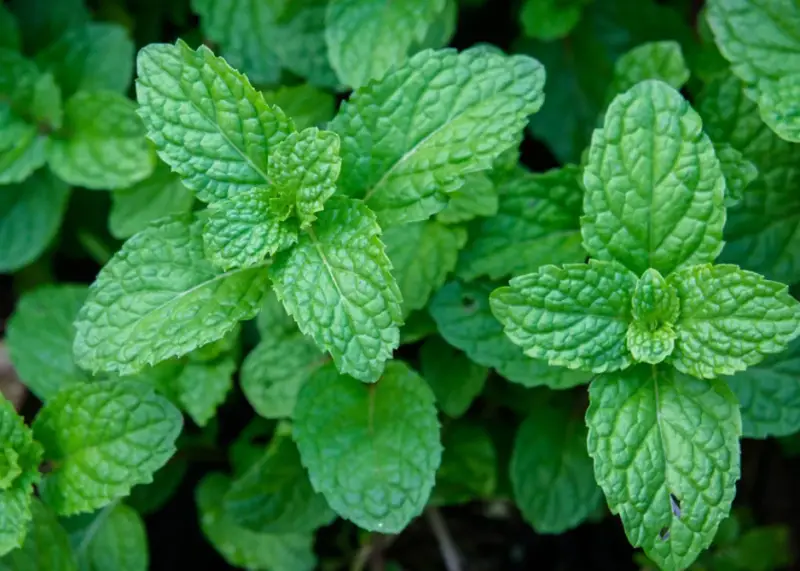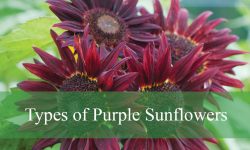Peppermint (Mentha × piperita) is a versatile and fragrant herb, ideal for gardeners and home chefs alike. Known for its refreshing scent, peppermint is a hybrid of spearmint and watermint, and it’s highly valued for its culinary, medicinal, and even pest-repellent qualities.
Whether you’re looking to cultivate peppermint for homemade teas, garnishes, or just to enjoy its soothing aroma, this detailed guide covers all aspects of peppermint plant care.
Overview of Peppermint Plant

- Scientific Name: Mentha × piperita
- Common Name: Peppermint
- Family: Lamiaceae
- Type: Herbaceous perennial
- Height and Width: 1–2 feet tall, 1–2 feet wide
- Preferred Sun Exposure: Full sun to partial shade
- Ideal Soil: Well-draining, slightly acidic to neutral
- Bloom Time: Summer
- USDA Hardiness Zones: 5-9
Choosing the Right Spot to Plant Peppermint
Understanding Peppermint’s Growth Pattern
One of the most notable features of peppermint is its aggressive growth. If left unmanaged, peppermint can quickly spread and take over your garden. To prevent it from becoming invasive, many gardeners choose to grow peppermint in containers or restrict its root spread with barriers if planting directly in the ground.
Ideal Light Conditions
While full sun will bring out the richest flavor in peppermint leaves, it also tolerates partial shade. In regions with extremely hot summers, partial shade can even be beneficial, as it prevents leaf scorching and moisture loss.
Soil Preparation
Best Soil Type for Peppermint
Peppermint is highly adaptable but prefers a moist, loamy soil that drains well. Aim for soil that retains moisture without becoming waterlogged. A pH level between 5.5 and 7 is optimal, but peppermint is quite forgiving and will thrive in a range of soil types.
Amendments for Rich Flavor
For the best results, add organic compost or well-rotted manure to the soil before planting. This will enrich the soil and support robust growth. Mulching around the base can help conserve soil moisture, especially during hot weather.
Planting Peppermint
Starting from Seeds or Cuttings
Peppermint can be started from either seeds or cuttings. Seeds are small and delicate, so they should be surface-sown without covering them deeply with soil. Cuttings, on the other hand, offer a quicker route to established plants and are preferred by many growers for their higher success rate.
- For Seeds: Lightly press seeds into the soil surface and keep the area moist until germination, which should occur within 7-10 days.
- For Cuttings: Snip a 4-5 inch stem, remove the lower leaves, and place it in water. Within two weeks, roots will begin to form, at which point it can be transplanted into soil.
Spacing
Allow at least 18-24 inches between peppermint plants if planting in the ground. This spacing encourages good air circulation and prevents plants from shading each other.
Watering and Humidity
Consistent Moisture
Peppermint is a moisture-loving herb, but it’s essential to strike the right balance. Overwatering can lead to root rot, while underwatering will reduce flavor potency. Keep the soil consistently moist but not soggy, and make sure containers have proper drainage.
Humidity Needs
Peppermint enjoys moderate to high humidity. If you’re growing peppermint indoors, consider misting the plant or placing a water tray nearby to raise the humidity level around it.
Temperature Tolerance
Peppermint thrives between 55-70°F but is hardy enough to withstand light frosts in Zones 5-9. For colder climates, bring peppermint pots indoors during winter or apply mulch around outdoor plants to insulate the roots.
Fertilizing Peppermint
Peppermint doesn’t require heavy fertilization, but adding a light layer of compost or a balanced fertilizer once a year in early spring will support vigorous growth. Avoid excessive fertilizing, as this can dilute the flavor and aroma by encouraging excessive leaf growth with lower oil concentrations.
Types of Peppermint Varieties
Peppermint comes in several delightful varieties, each with unique flavors and appearances:
- Chocolate Mint (Mentha × piperita ‘Chocolate’): Known for its chocolate-mint aroma, reminiscent of mint chocolate chip ice cream.
- Citrata (Mentha × piperita ‘Citrata’): Often called orange mint due to its citrus fragrance.
- Crispa (Mentha × piperita ‘Crispa’): Features crinkled green leaves with pale lavender blooms.
- Lavender Mint (Mentha × piperita ‘Lavender’): A ground cover with dark green leaves and lavender blooms, great for savory dishes.
- Lime Mint (Mentha × piperita ‘Lime’): Has bronze-green leaves with a refreshing lime scent.
- Variegata (Mentha × piperita ‘Variegata’): A decorative variety with green leaves featuring white variegation and violet flowers.
Pruning and Containment
Pruning to Control Growth
Regular pruning is essential to manage peppermint’s growth and to keep the plant bushy and flavorful. Trim back the top few inches of stems once the plant reaches about 6 inches tall. Frequent pruning not only controls the plant’s spread but also encourages fresh, tender growth rich in essential oils.
Managing Peppermint’s Invasiveness
If growing peppermint in the ground, consider installing root barriers. Alternatively, you can plant peppermint in a bottomless bucket or large container sunk into the soil to contain its roots. Growing peppermint in containers is the simplest way to control its spread, especially if you want to keep it in an herb garden alongside other plants.
Harvesting Peppermint
The best time to harvest peppermint is in the morning, when essential oils are at their peak. For the most robust flavor, wait until the plant begins to flower but still has young, vibrant leaves. Cut stems just above a leaf node to encourage new growth.
Tips for Harvesting
- Timing: Harvest when plants reach 4 inches in height or taller.
- Frequency: Peppermint can be harvested multiple times per season, as it will continue to produce new growth throughout summer.
- Drying and Storing: For long-term storage, peppermint can be dried by hanging bundles of cut stems upside down in a cool, dry place. Once dried, store leaves in an airtight container away from direct sunlight.
Growing Peppermint in Containers
Since peppermint’s roots spread aggressively, growing it in pots or containers can save you from dealing with its invasive nature. When choosing a container, go for one that is at least 12 inches deep to allow ample room for root growth.
- Potting Soil: Use a high-quality potting mix with added compost.
- Drainage: Ensure the container has sufficient drainage holes to prevent waterlogging.
Container-grown peppermint tends to grow faster and may need more frequent watering, especially during warm weather.
Common Pests and Problems
Pests to Watch Out For
Peppermint is generally resistant to pests, but you might encounter issues with spider mites, aphids, and occasionally whiteflies. These pests can be managed by rinsing the plant with water or applying a mild insecticidal soap.
Preventing Diseases
In some regions, peppermint may be susceptible to verticillium wilt, a soil-borne fungal disease that can cause leaves to yellow and wilt. Rotating plants or using disease-free soil can reduce this risk.
Propagation Techniques
Propagating peppermint is incredibly simple, especially from stem cuttings. This method is popular because it ensures you get an exact clone of the parent plant with the same flavor profile.
- Take a 4-inch cutting from a healthy stem.
- Remove leaves from the bottom half of the cutting.
- Place the cutting in water and wait for roots to develop over the next two weeks.
- Once roots are visible, transplant the cutting into potting soil and keep it moist.
With this approach, you can enjoy an endless supply of peppermint for years to come!
Peppermint’s Companion Plants and Uses
Peppermint works well as a companion plant because it deters pests. Plant it near cabbage, broccoli, or tomatoes to reduce pest infestations. In addition to culinary uses, peppermint also has medicinal benefits and can be used in teas to soothe digestive issues, or crushed to make a natural insect repellent.
Final Thoughts
Whether grown for its fragrance, flavor, or pest-repellent qualities, peppermint is a valuable addition to any garden. With the right care, including regular pruning, moisture management, and occasional fertilization, you’ll have a flourishing peppermint plant ready to enhance your cooking, teas, and more. Happy growing!






